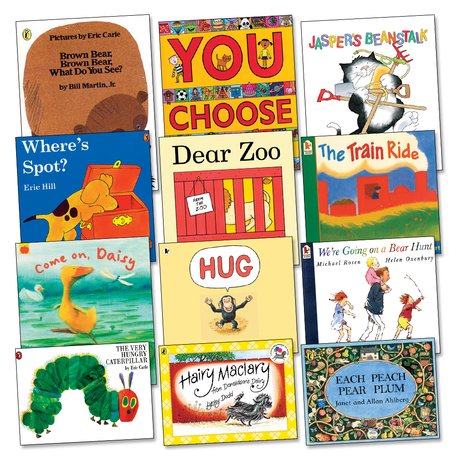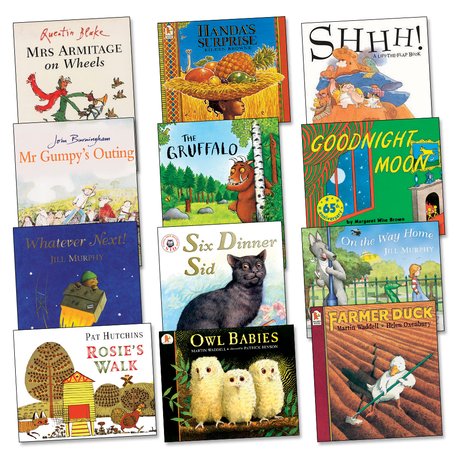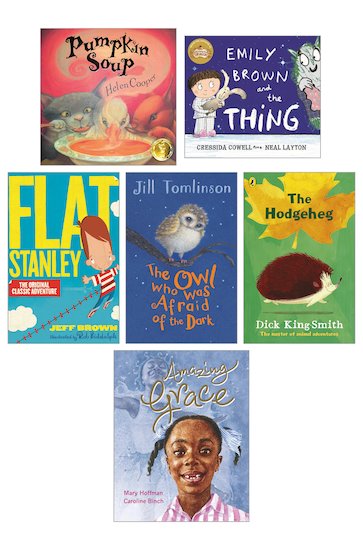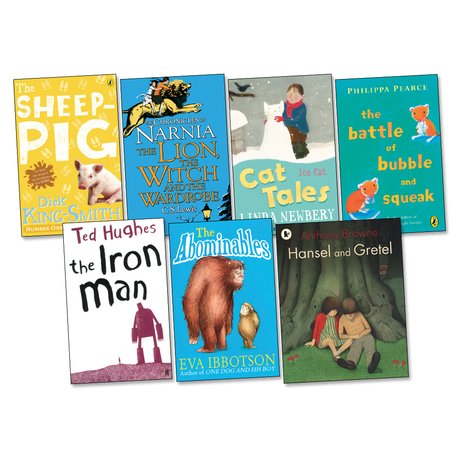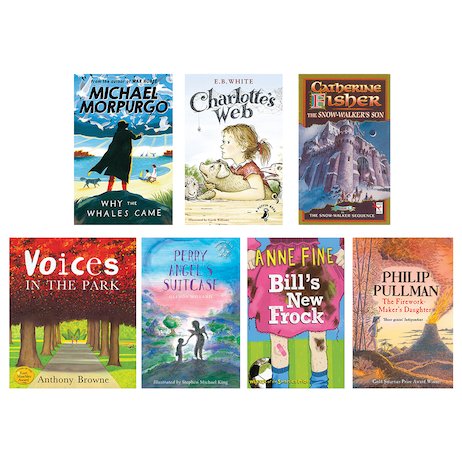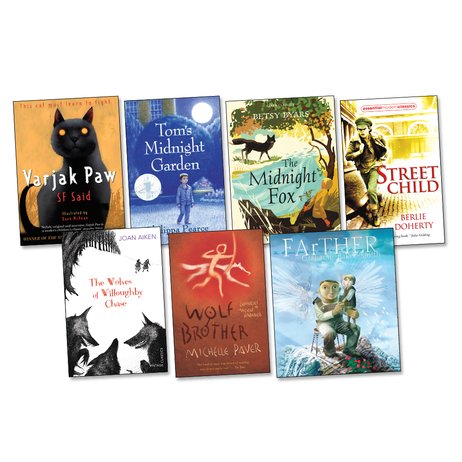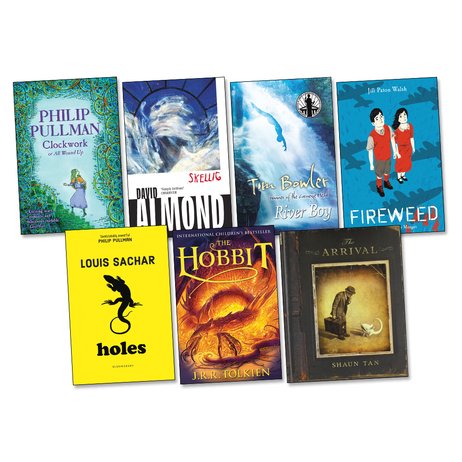For more information about our phonics and reading scheme, please see our English Page.
![]()
We feel passionately that developing a love of reading from an early age will benefit our children hugely: personally, socially and educationally. Therefore, reading is at the heart of everything we do. Through the use of carefully chosen texts, we expose our children to literature that will spark their passions and develop a love of English. These texts are linked to our topics (where it isn’t tenuous) to ensure that it is meaningful and exciting. Please see ‘Our Year in Books’ below. In EYFS, these books are studied annually. In KS1 and KS2, we undertake one journey during our first cycle and the second journey in the following year.



. Cycle 1 Cycle 2

. Cycle 1 Cycle 2

Each classroom is equipped with a reading area containing a broad range of carefully selected texts. These texts are age appropriate, incorporate a range of genres and have been purposely chosen to engage and inspire children’s love of reading. Alongside this, we have invested greatly in reading resources to support and supplement our teaching. These include Pie Corbett reading spine sets, KS2 class sets of books, high quality texts (based on the work of Mary Myatt) to support our Topic teaching, and specific year group books for daily shared class reading from Doug Lemov and ‘The 5 Plagues of a Developing Reader’. This ensures that we are exposing our children to: archaic language, non-linear time sequences, narrative complexity, figurative and symbolic texts and resistant texts. Leeds Library Service also supplement our reading stock; providing us with a broad range of texts that help to foster and develop a love of reading as well as supporting and extending learning across the curriculum.
“Sharing a book with a child is fun! It’s a time for closeness, laughing and talking together-and can also give children a flying start in life and help them to become lifelong readers.” Book Trust
Click on the buttons below for 100 recommend reads in your child’s year group.
Pie Corbett reading spine
We want our school to be a place where children are read to, enjoy, discuss and work with high quality books. These ‘essential reads’ would be a store of classics, creating a living library inside a child’s mind. This is the ‘Reading Spine’. We have provided the Pie Corbett reading spine in our classrooms so that children have access to these high quality texts.
Pie Corbett says…
Great books build the imagination. The more we read aloud expressively, and the more children are able to savour, discuss and reinterpret literature through the arts, the more memorable the characters, places and events become, building an inner world. A child who is read to will have an inner kingdom of unicorns, talking spiders and a knife that cuts into other worlds. The mind is like a ‘tardis’; it may seem small but inside there are many mansions. Each great book develops the imagination and equips the reader with language. Great stories speak to us as individuals and some children will return to certain books again and again. Great stories also build our language because around 75 per cent of our vocabulary comes from our reading. Reading develops the ability to think in the abstract; to follow lines of thought. Schools that have a reading spine, build a common bank of stories that bind the community together. These are shared and deeply imagined common experiences.
Nursery Reading Spine (included as parents may wish to read these at home before starting school)
The books that I have chosen are almost all very repetitive and rather like songs! This makes them easier for children to join in with so that the experience of reading becomes interactive and the children begin to learn the story as they are read to. In each book there will be much to discuss so that the children understand the vocabulary as well as what is happening.
All of the books have pictures, which support the text but also compliment and add to it. It is important to discuss the pictures and what is happening in them as much as the text. After a while, the children will get to know each story word for word, which can give great confidence to early readers in terms of fluency when reading.
Reception Reading Spine
The books for the 4–5 age group build on the Nursery selection. They still mainly use patterned language, but begin to have a stronger emotional connection with the reader. There is also plenty to discuss and to wonder about. Many of them lend themselves to retelling and creating new versions or further adventures featuring the same characters.
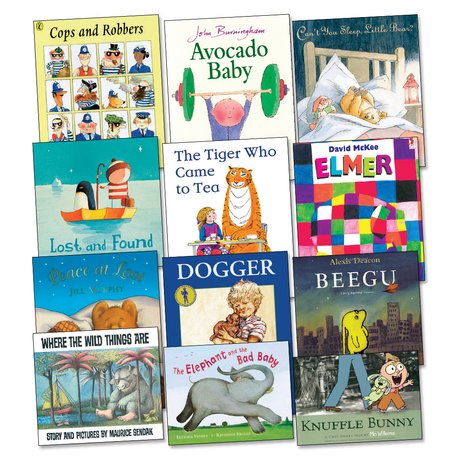
Year 1 Reading Spine
The picture books in Year 1 offer deeper exploration of emotions and wonder. They are mainly rooted in the everyday crises of life. Again, most of these books lend themselves to setting up a variety of play situations – using toys, costumes and puppets – but the children also need to be involved in careful reading of the books, paying close attention to the detail and entering imagined worlds to experience the stories deeply – then talking it all through.
Year 2 Reading Spine
In Year 2, it is important to start to move from sharing picture books into sharing chapter books. These will not only provide a meaty read, but also demand that the children use their imagination. Of course, there are also many Reception and Year 1 children who will
sit and enjoy a chapter book and this should form part of their reading experience. Many of the chosen books operate on different levels – from the satisfaction of good stories to the exploration of deeper themes.
http://images.scholastic.co.uk/assets/a/e9/cb/pie-corbett-yr2-1393273.pdf
Year 3 Reading Spine
Whilst I have selected just one picture book for Year 3, there are many more which will intrigue and provide a challenge for this age group such as The Day the Crayons Quit (HarperCollins) or John Brown, Rose and the Midnight Cat (Puffin). Children of this age need a great storyline, but should also be experiencing deep and rich books.
Year 4 Reading Spine
This selection covers a range of stories that extends to fantasy as well as introducing Anne Fine’s wonderful books. I came across Perry Angel’s Suitcase by Glenda Millard in Australia. It is a deeply moving book, both sad, but also full of hope – a lovely book. Read it yourself before reading it with the children to judge whether it is right for your class.
Year 5 Reading Spine
It was only when I had made my list for Year 5 that I realised how animals feature heavily – cats, wolves and foxes! These are romping reads as well as stories that touch deeply. I have listed them in a suggested order that leads towards what I would say is the greatest novel ever written for children.
Year 6 Reading Spine
Here is my selection of great novels for Year 6 children. Do also look out for Doris Lessing’s Through the Tunnel (HarperCollins), which is a fabulous and challenging short story. These books are the reading rites of passage that pave the way for the great literature that lies ahead. The books are intense reads, meaty books that are crafted beautifully. They will stay with the reader forever. These books are life-changers. Do read them before sharing with the class as some touch on challenging themes.
The 5 Plagues of Reading
In his book ‘Reading Reconsidered’, Doug Lemov points out that there are five types of texts that children should have access to in order to successfully navigate reading with confidence. These are complex and demand more from the reader than other types of books.
The five text types are:
Archaic Language
The vocabulary, usage, syntax and context for cultural reference of texts over 50 or 100 years old are vastly different and typically more complex than texts written today. Children need to be exposed to and develop proficiency with antiquated forms of expression to be able to hope to read more complex texts.
Non-Linear Time Sequences
Stories where time flows back and forth in a complex manner not just flows in one direction.
Narratively Complex
Some books have more than one narrator telling the story or non-human narrators such as the horse who tells the story in Black Beauty.
Complexity of story
Where the plot and symbols used are more complicated for example interwoven plots.
Resistant Texts
This refers to texts which are difficult to understand, texts that deliberately resist comprehension. You have to assemble meaning around nuances, hints, uncertainties and clues.
The 5 Plagues read in our school
Please contact us if you require further information about our curriculum.








